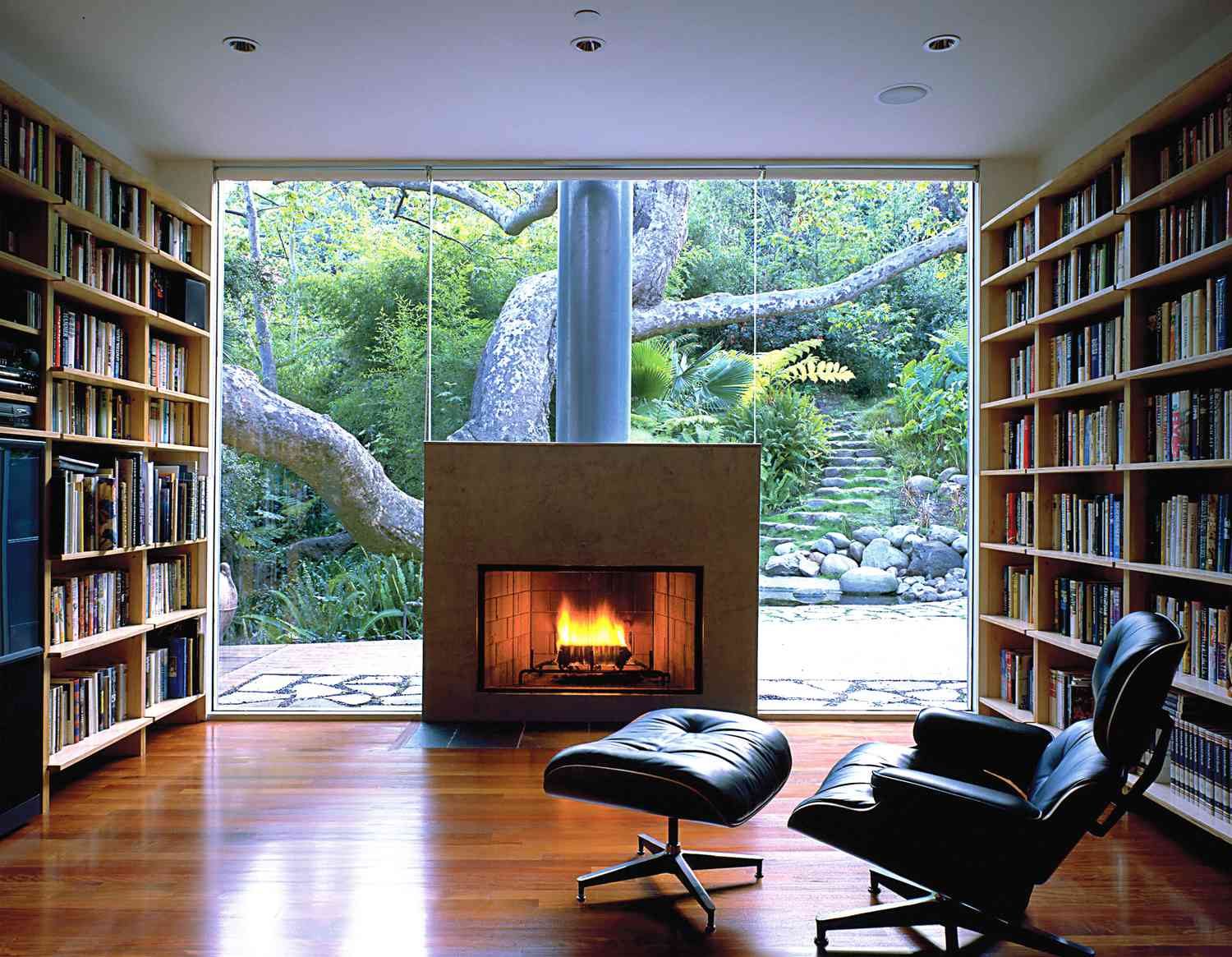Creating a home library is more than just arranging books on shelves; it’s about crafting a sanctuary where bibliophiles can immerse themselves in the quintessential joy of reading. Whether you’re working with a dedicated room or carving out a cozy nook in your living space, the possibilities for designing your personal library are endless.
The art of curating a home library requires careful consideration of aesthetics, functionality, and personal style. In today’s fast-paced digital world, having a physical space dedicated to books not only adds sophistication to your home but also provides a peaceful retreat where you can disconnect and indulge in the timeless pleasure of reading.
Home Library Ideas
This guide explores thirteen innovative ideas to help you design a home library that reflects your personality while maximizing your space and book collection. From classic floor-to-ceiling shelving to modern, minimalist approaches, these ideas will inspire you to create your perfect reading paradise.
1. Floor-to-Ceiling Built-in Shelves

Floor-to-ceiling shelving represents the epitome of classic library design, offering maximum storage capacity while creating a dramatic architectural statement. These built-in structures transform plain walls into sophisticated focal points, utilizing vertical space efficiently and eliminating the need for multiple standalone bookcases. The continuous lines of shelving create an illusion of higher ceilings, making your room appear more spacious and grand.
When designing floor-to-ceiling shelves, consider incorporating a rolling ladder for easy access to upper shelves. This not only adds functionality but also brings a touch of old-world charm reminiscent of grand traditional libraries. Include adjustable shelving to accommodate books of different sizes and consider adding LED strip lighting to highlight your collection and create ambient lighting.
2. Reading Window Seat
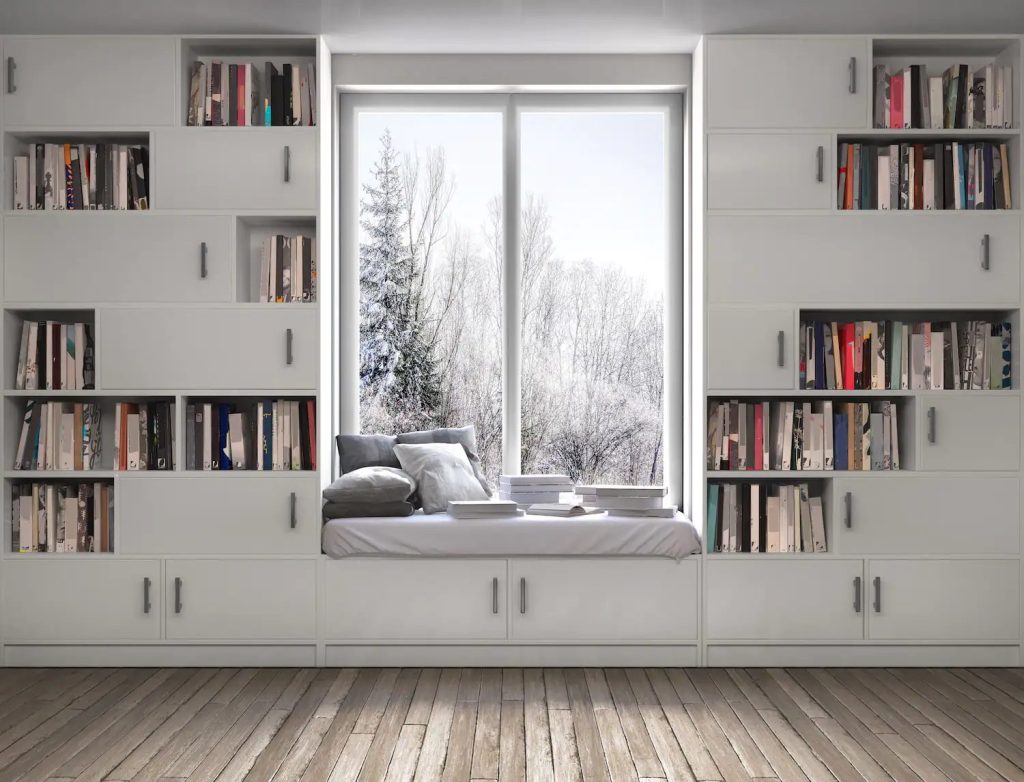
A window seat library combines the pleasure of reading with natural lighting and comfortable seating. This design element transforms an ordinary window into a cozy retreat where you can lose yourself in a good book while enjoying views of the outside world. The space beneath the seat can be utilized for additional book storage, making it both beautiful and practical.
The key to creating the perfect window seat library lies in the details. Include plush cushions and pillows for comfort, ensure proper lighting for evening reading, and consider adding storage drawers beneath the seat for blankets or less frequently accessed books. The surrounding window frame can be fitted with built-in shelves, creating a complete library nook within a compact space.
3. Library Room Divider
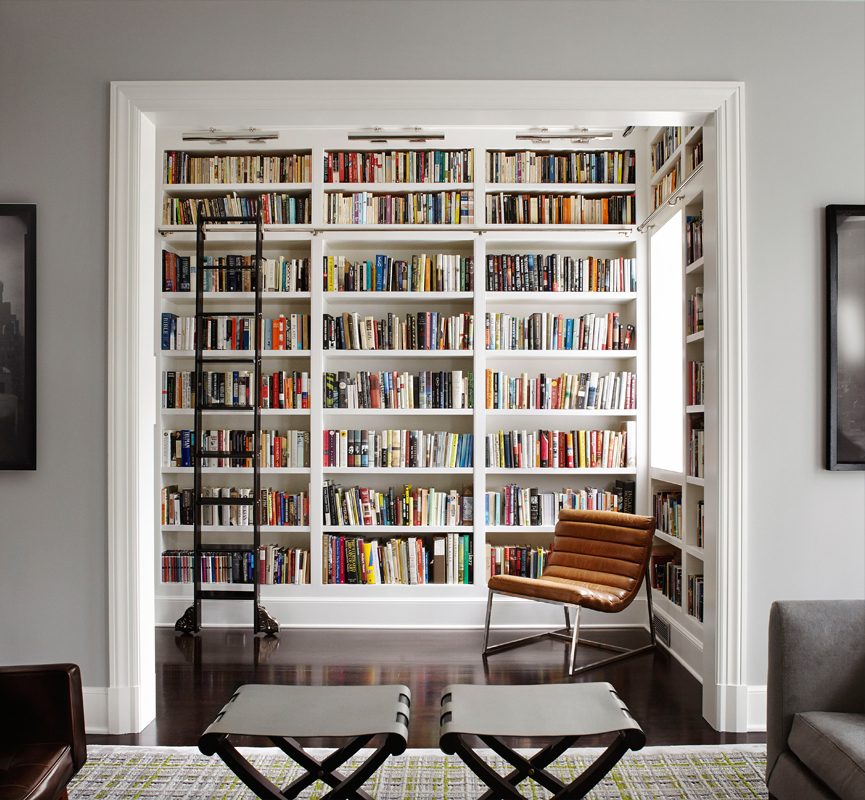
In open-plan living spaces, a library room divider serves multiple purposes by creating distinct zones while maintaining an open feel. These freestanding or semi-permanent structures can house your book collection while defining separate areas for different activities, such as reading, dining, or working.
Consider designing a double-sided bookshelf that allows access from both sides, maximizing storage and creating visual interest from multiple angles. Include varying shelf heights and widths to accommodate different book sizes and decorative objects. This approach not only organizes your collection but also adds architectural interest to your space.
4. Under-Stairs Library
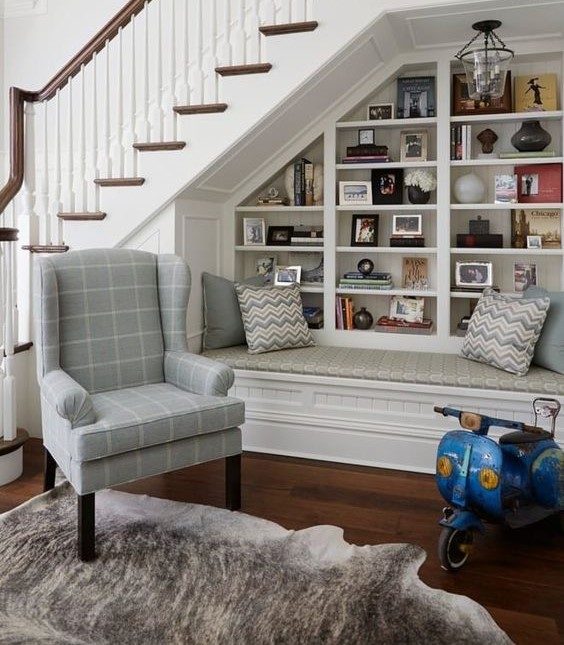
Utilizing the often-overlooked space under stairs can create a unique and space-efficient library. This clever solution transforms what might otherwise be wasted space into a functional and visually appealing book storage area. The natural slope of the stairs creates interesting angles that can be incorporated into the design.
Design custom shelving that follows the staircase’s angle, maximizing every inch of available space. Consider adding small reading lights or LED strips to illuminate the books, and if space permits, incorporate a small seating area. This setup works particularly well for collections of varying book sizes, as the changing height of the space naturally accommodates different shelf heights.
5. Library Wall Feature

Transform an entire wall into a stunning library feature that serves as the room’s centerpiece. This approach creates a dramatic visual impact while providing extensive storage space for your book collection. The library wall can incorporate various elements beyond just shelving, such as artwork displays or multimedia storage.
Design the wall with a mix of open and closed storage, allowing you to display your most beautiful books while concealing other items behind cabinet doors. Consider incorporating a color scheme that complements your room’s decor, and add architectural details like crown molding or decorative trim to enhance the overall aesthetic.
6. Circular Library Room
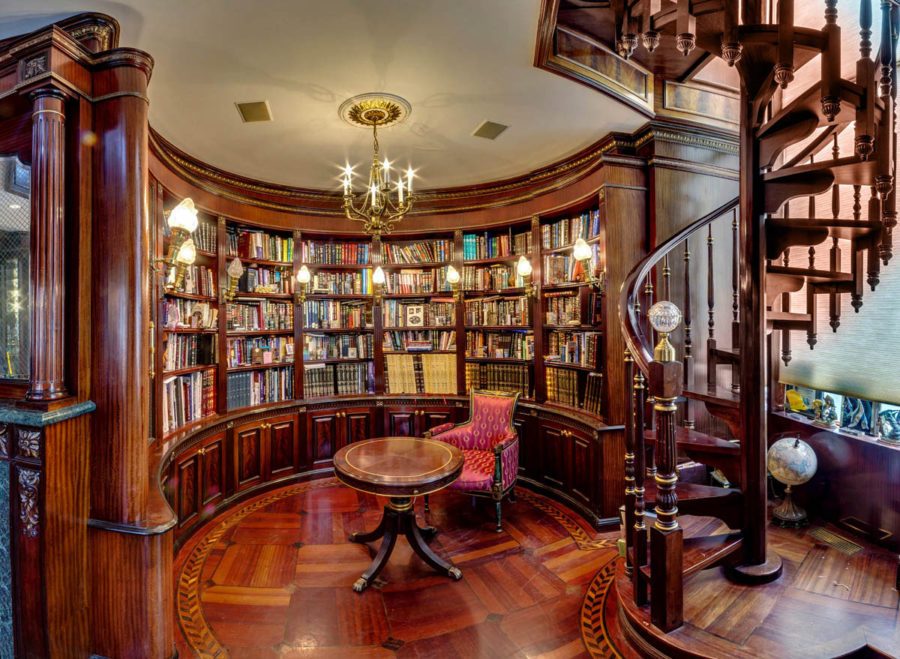
For those with the luxury of space, a circular library room creates an immersive reading experience. The curved walls lined with books create a cocoon-like atmosphere that encourages focus and relaxation. This design maximizes wall space while creating a unique architectural feature.
The circular layout requires custom shelving to follow the room’s curve. Center the space with comfortable seating arranged in a way that promotes both solitary reading and conversation. Consider adding a central light fixture or skylight to provide even illumination throughout the space.
Related Guide: 13 Small Library Room Ideas
7. Modern Minimalist Library
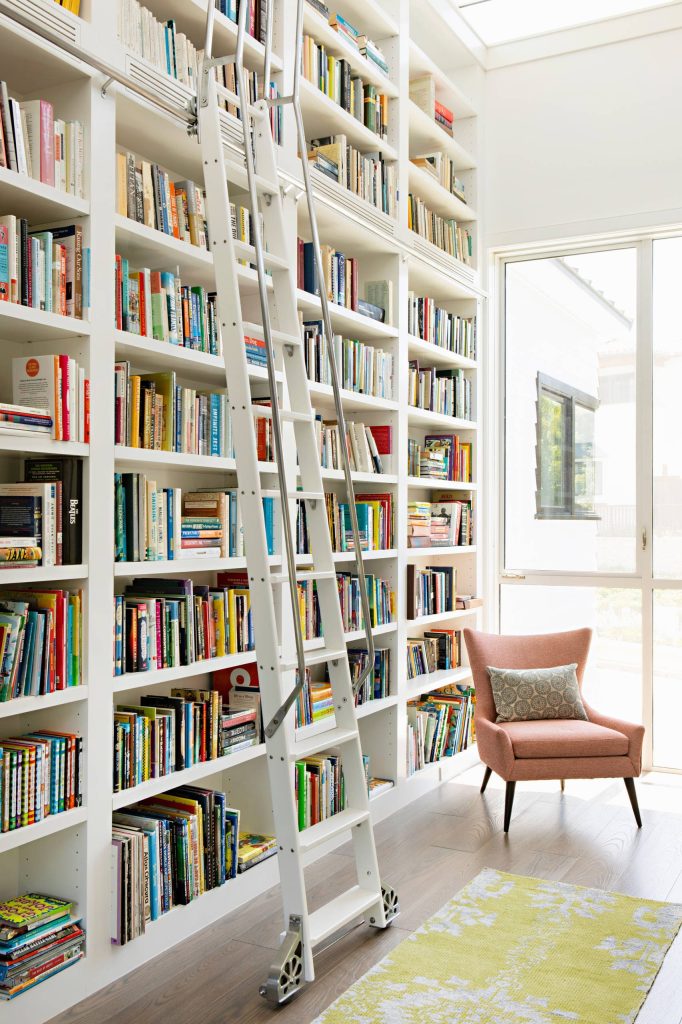
A minimalist approach to home library design focuses on clean lines, simple colors, and carefully curated displays. This style works particularly well in contemporary homes and can make a small collection appear more impactful through thoughtful presentation.
Implement floating shelves for a sleek look, and maintain negative space between book groupings. Choose a monochromatic color scheme for the shelving and organize books by size or color to create a cohesive visual display. This approach emphasizes quality over quantity and creates a serene reading environment.
8. Multi-Functional Office Library
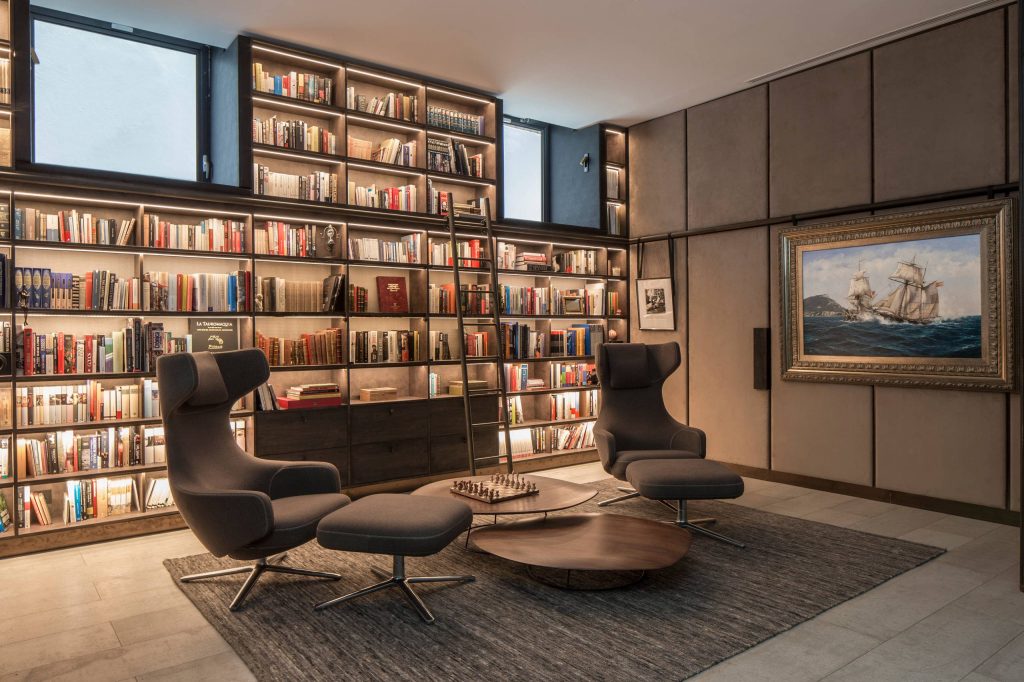
Combine your home office and library to create a sophisticated workspace that encourages both productivity and literary exploration. This dual-purpose room maximizes space efficiency while creating an inspiring environment for both work and reading.
Design the space with distinct zones for working and reading, using furniture placement to delineate areas. Include a comfortable reading chair away from the desk area, and ensure proper lighting for both tasks. Consider incorporating a rolling ladder for access to upper shelves, which can double as a conversation piece.
9. Children’s Reading Corner
Create a dedicated library space that caters to young readers, encouraging a love of books from an early age. This space should be both functional and playful, with easy access to age-appropriate books and comfortable seating for story time.
Include low shelves that children can reach independently, and consider forward-facing book displays to showcase covers. Add soft seating, cushions, and perhaps a small tent or canopy to create a magical reading atmosphere. Incorporate storage solutions for both books and reading-related activities.
10. Library Loft Space
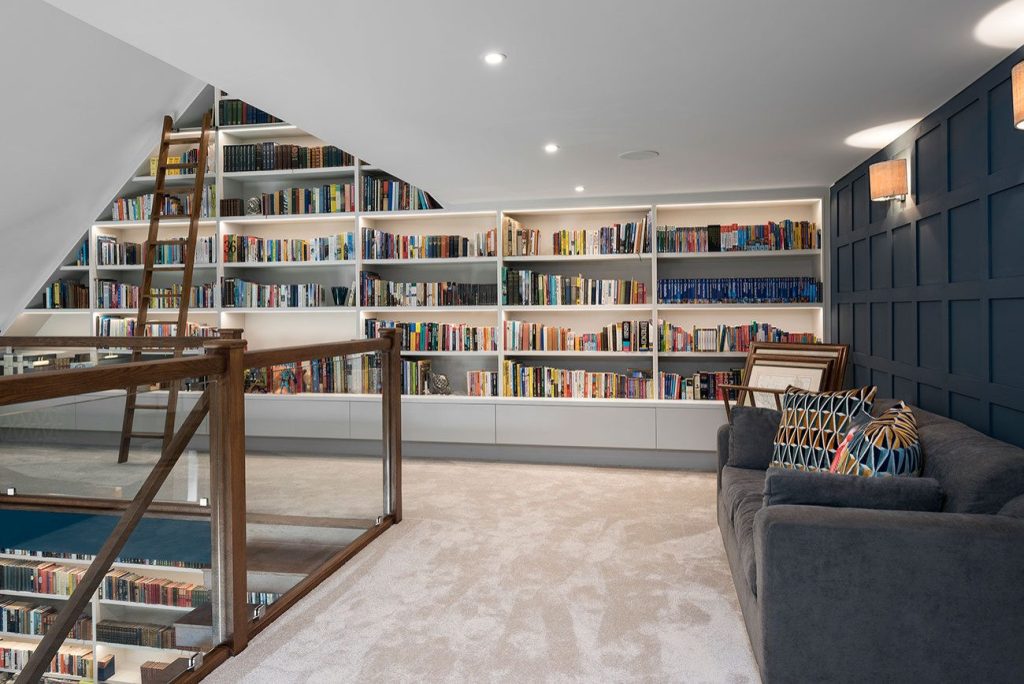
Utilize an upper-level loft or mezzanine area to create an elevated library retreat. This design takes advantage of vertical space while creating a distinct zone for reading and relaxation above the main living area.
Install proper railings that incorporate bookshelf designs, and ensure adequate lighting for both day and night reading. Consider adding a comfortable seating area with a small table, creating a cozy spot for reading or contemplation with a view of the space below.
11. Vintage-Style Rolling Library
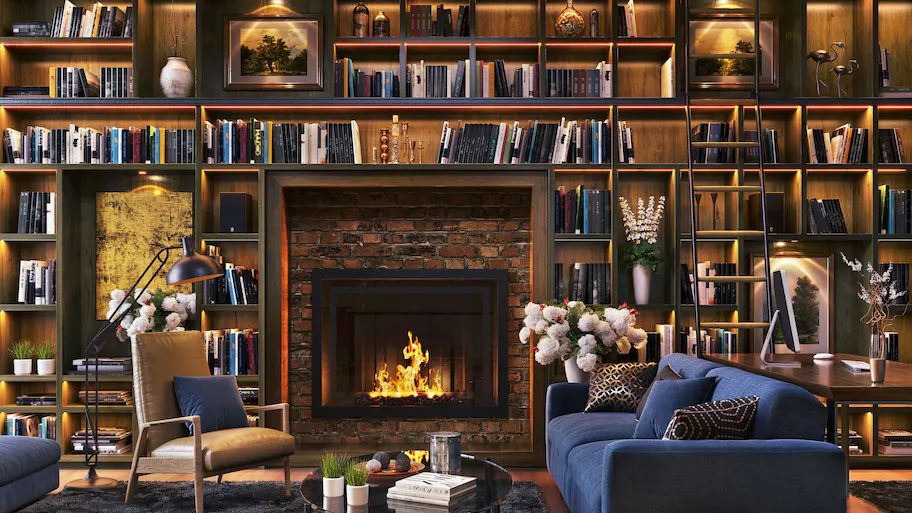
Create a flexible library system using vintage-style rolling bookcases that can be moved and rearranged as needed. This approach offers versatility while adding character through the use of traditional library furniture designs.
Select or custom-build bookcases with quality casters that move smoothly on your flooring. Include a mix of shelf heights and consider adding wire mesh or glass doors for protection. This system works particularly well in larger rooms where furniture arrangement flexibility is desired.
12. Outdoor Reading Room
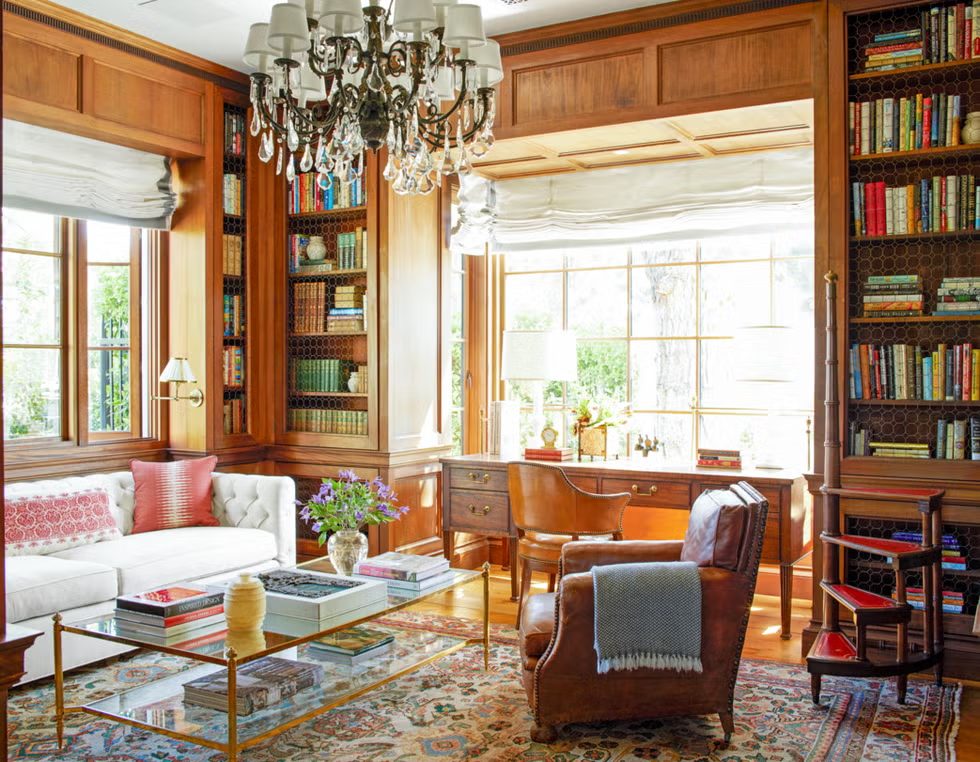
Extend your library into an outdoor space with a weather-protected reading room that connects with nature. This unique approach creates a tranquil reading environment while taking advantage of natural light and fresh air.
Design the space with weather-resistant materials and adequate protection from the elements. Include comfortable, durable furniture and consider installing retractable awnings or screens for variable weather conditions. Ensure proper ventilation and protection for books when the space is not in use.
13. Secret Library Door
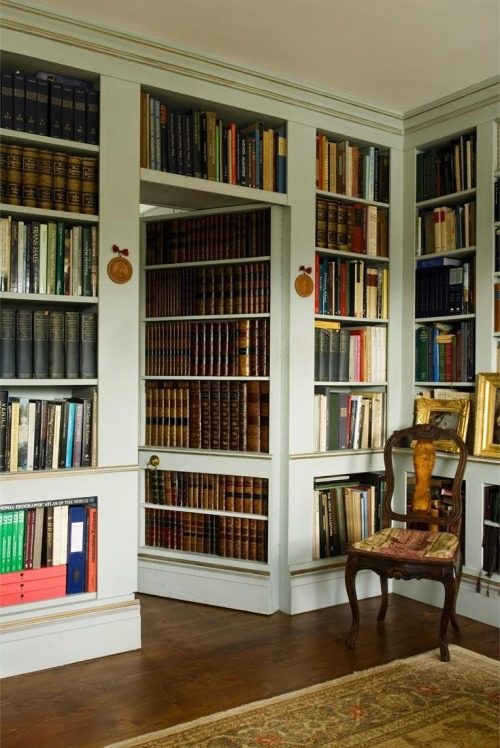
Create an element of mystery and excitement with a hidden library entrance or secret bookshelf door. This design not only adds an interesting architectural feature but can also maximize space usage in unexpected ways.
Install a high-quality door mechanism that ensures smooth operation and longevity. Consider both the practical aspects of book storage and the mechanical requirements of the door system. This feature works particularly well in studies, offices, or as an entrance to a private reading room.
Conclusion
Creating the perfect home library is a personal journey that combines functionality with aesthetic appeal. Whether you choose a traditional floor-to-ceiling design or opt for a more modern, minimalist approach, the key is to create a space that reflects your personality while serving your reading needs.
These thirteen ideas provide a foundation for designing a library that not only houses your beloved books but also creates an inviting atmosphere for reading, learning, and relaxation.
Remember that the best home library is one that grows and evolves with your collection while remaining true to your personal style and space requirements. With careful planning and creative implementation, you can create a literary haven that will bring joy and inspiration for years to come.

